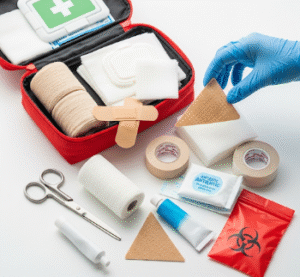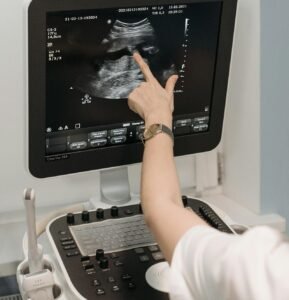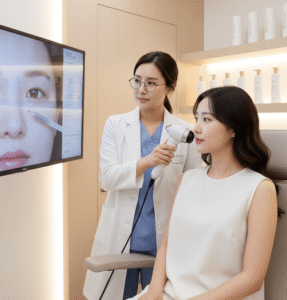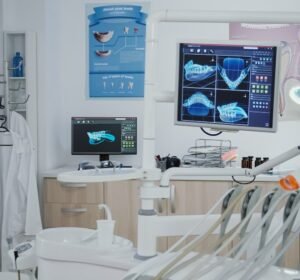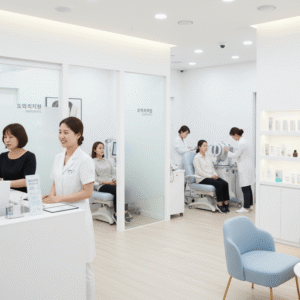Korea has long been recognized as a global leader in innovation and connectivity, and now it is using that technological strength to transform the healthcare landscape. The introduction of 5G networks is reshaping the country’s approach to telehealth, enabling faster, more reliable, and more interactive medical services.
Telehealth has existed for years, but it was often limited by internet speed and connectivity challenges. With 5G, Korean healthcare providers are unlocking a new level of care — one that combines real-time monitoring, high-definition consultations, and AI-assisted diagnostics to deliver medical services anywhere, anytime.
The Power of 5G in Healthcare
The transition from 4G to 5G isn’t just about faster downloads. It brings specific benefits that make it ideal for healthcare innovation:
- ❂ Ultra-low latency: Data transfers happen almost instantly, allowing real-time consultations and device monitoring without lag.
- ❂ High bandwidth: Doctors can send and receive large files such as high-resolution imaging and video without interruption.
- ❂ Massive connectivity: Multiple medical devices, wearables, and sensors can stay connected simultaneously.
- ❂ Reliable performance: 5G ensures stable connections for critical procedures and emergency communication.
- ❂ Edge computing: Data can be processed locally instead of traveling to distant servers, reducing response time and boosting accuracy.
These capabilities are transforming how Korean hospitals, startups, and patients experience telehealth in daily life.
1. Crystal-Clear Teleconsultations
Thanks to 5G, doctors and patients can now enjoy high-definition teleconsultations that feel closer to in-person visits. In a country known for its advanced imaging technology, this means clearer visuals for dermatology, dental, and radiology consultations.
Doctors can examine fine details in skin tone, wounds, or medical scans during video calls without pixelation or delay. For patients, this results in faster diagnosis, greater confidence, and fewer follow-up visits.
Hospitals across Seoul and Busan have already begun integrating 5G-supported teleconsultation systems, particularly in specialized fields like radiology and oncology.
2. Remote Patient Monitoring and Smart Devices
Another major transformation lies in remote patient monitoring (RPM). With 5G, wearable devices, health patches, and home diagnostic kits can continuously transmit patient data — such as heart rate, oxygen levels, glucose, and blood pressure — directly to hospitals.
This allows medical professionals to track chronic conditions like hypertension, diabetes, and cardiac disease in real time. If an abnormal pattern appears, doctors can intervene immediately.
- ⚪ Elderly patients can be monitored safely from home, reducing hospital visits.
- ⚪ Rural residents can access expert medical care without traveling long distances.
- ⚪ Clinicians can manage more patients efficiently using data dashboards.
The result is a more proactive and preventive approach to healthcare rather than waiting for emergencies.
3. 5G and Mobile Health for Remote Areas
Korea’s mountainous regions and islands have traditionally struggled with access to healthcare. 5G connectivity is closing this gap by supporting mobile telehealth units and remote medical vans that connect to hospital networks.
Doctors can provide real-time consultations, transmit diagnostic data, and even perform ultrasound scans remotely. These mobile services have become especially important for older populations and small rural communities.
This improved connectivity ensures that healthcare equity becomes a reality — giving everyone, regardless of location, access to quality care.
4. AI-Assisted Diagnostics in Real Time
The integration of 5G and artificial intelligence is revolutionizing the diagnostic process. AI algorithms can analyze medical images, lab results, and wearable data almost instantly when transmitted through a 5G network.
For example, during an online consultation, AI can flag irregularities in a chest X-ray or detect heart rhythm changes from smartwatch data. Doctors receive immediate analysis, improving accuracy and speed in diagnosis.
This combination of 5G and AI transforms telehealth from a simple communication tool into a decision-making assistant for clinicians.
5. Smart Hospitals and Connected Ecosystems
Korea’s leading hospitals are now building 5G-enabled smart hospital systems. These integrate wearable tech, medical devices, and AI analytics into one connected ecosystem.
In such environments:
- ❂ Patient data from multiple devices syncs seamlessly.
- ❂ Surgeons can use augmented reality (AR) for guided procedures.
- ❂ Emergency rooms receive patient vitals in transit before arrival.
These systems not only improve efficiency but also help reduce medical errors by allowing instant data sharing among medical teams.
6. Tele-Robotics and Future Procedures
One of the most exciting 5G applications lies in tele-robotic surgery and remote medical assistance. Although still in early stages, Korean researchers are exploring how surgeons can control robotic instruments from different locations using 5G’s low latency.
This could eventually allow top specialists in Seoul to guide procedures in small rural hospitals in real time. Such innovation may redefine global healthcare collaboration and expand access to advanced surgery across borders.
Benefits of 5G-Powered Telehealth
The advantages of Korea’s 5G-driven telehealth transformation are extensive:
- ⚪ Greater access: Patients in remote areas can receive care without traveling.
- ⚪ Improved efficiency: Doctors can see more patients with fewer logistical barriers.
- ⚪ Reduced costs: Both patients and hospitals save time and resources.
- ⚪ Personalized care: Continuous data allows customized treatment plans.
- ⚪ Emergency readiness: Real-time data alerts can prevent complications before they occur.
These benefits align perfectly with Korea’s long-term vision for digital healthcare innovation and aging population management.
Challenges and Considerations
While 5G has unlocked incredible possibilities, challenges remain.
- ❂ Regulatory adaptation: Korean telemedicine laws are evolving but still cautious regarding remote prescriptions and full-scale teleconsultations.
- ❂ Data security: Health information must be protected with strict encryption and privacy protocols.
- ❂ Infrastructure investment: Clinics and smaller hospitals need funding to integrate 5G systems.
- ❂ Digital literacy: Older patients may struggle to use new telehealth platforms without support.
- ❂ Trust and reliability: Doctors must validate the accuracy of remotely collected data to ensure clinical safety.
Addressing these challenges is key to making 5G-enabled healthcare inclusive and reliable for all Koreans.
7. Opportunities for Clinics and Startups
For medical startups and clinics, the 5G revolution opens new doors:
- ⚪ Develop 5G-based apps that integrate wearable data with teleconsultation platforms.
- ⚪ Offer hybrid care models combining physical visits and digital monitoring.
- ⚪ Partner with telecom companies for secure, high-speed healthcare connectivity.
- ⚪ Educate patients about the benefits of connected care through community programs.
By embracing 5G technology early, Korean healthcare providers can strengthen trust, efficiency, and patient satisfaction.
The Future of 5G and Telehealth in Korea
Looking ahead, Korea’s telehealth evolution will continue expanding beyond virtual visits. As technology matures, predictive health analytics, AI-driven monitoring, and cross-border telemedicine will become common.
Patients will have the freedom to consult doctors globally, share data securely, and receive personalized advice anytime. Hospitals will use smart networks to manage operations, predict patient needs, and ensure smoother communication.
In short, 5G is not just accelerating telehealth — it’s redefining it. The seamless link between connectivity, data, and healthcare expertise is shaping Korea’s future as a world leader in digital health.
Final Thoughts
For patients, it means accessibility and convenience. For doctors, it means precision and efficiency. For the country, it means a model of connected healthcare that bridges technology and humanity.
The future of telehealth in Korea is unfolding now — and thanks to 5G, it’s faster, clearer, and more connected than ever before.


